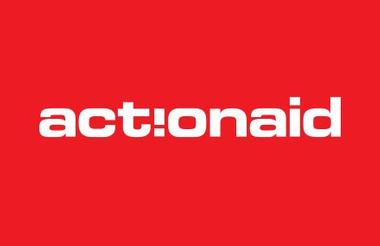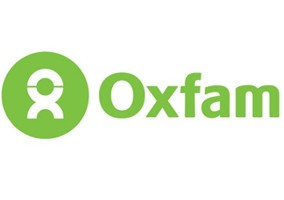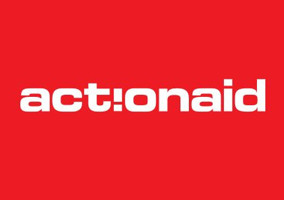Why is ActionAid so special to those who have worked in it?
I have just stepped down from the international Board of ActionAid International (AAI) after six years, having served previously as chair of ActionAid UK. During that time I have watched several key staff who had left ActionAid return, with the feeling that they were coming back home.
Many board members who finish their terms of office keep a special place for ActionAid in their hearts. I know I shall. No doubt other great secular charities have the same effect, as faith charities can do, on those who commit themselves to them, but ActionAid is the one I know that has engendered the deepest sense of enduring loyalty, identity and hope. I shall try to explain why.
Rooted in communities and movements of the poor and excluded
To understand ActionAid, you have ideally to sit cross-legged on a grubby tarpaulin in a circle with representatives of some of the poorest, most multiply disadvantaged people on earth, listening as they gradually find the courage and confidence to define what they need and want and to set about obtaining it. These are the reflect circles, drawing on simple methods of participatory learning and empowerment that are part of ActionAid’s DNA.
As people’s demands begin to crystallise, ActionAid and its local partners work with them to fashion a strategy including priorities, winning access to those with power and responsibility and holding them to account for their obligations to the people they govern or employ. Service delivery is part of the mix, but not for its own sake: it is one part of a wider approach based on mobilising people to assert their own rights.
A traditional concept of charity involves one fortunate and wealthier side giving opportunities and resources to chosen, less fortunate people, without necessarily changing the unequal power relations between the two sides. ActionAid International long ago turned its back officially on that model.
It is more interested in enabling people with apparently no power or control over their lives progressively to develop, assert and use it. Correcting the unequal power relationships that underpin all sorts of injustices, including poverty, is at the core of ActionAid’s whole approach. Yet this is not principally a function of intellectualised analysis: it is all rooted in those circles of people reflecting on their lives, taking action to assert their rights, learning from their success or failure, trying again, linking up with others in the same situation, giving each other hope, and creating social movements for change led by poor and marginalised people themselves.
ActionAid is an unapologetic champion and supporter of those social movements for justice; of progressive people power.
One of the reasons you never fully “leave” ActionAid is the memories of those sessions listening to the voices of, say, Muslim women living as a small minority in Nepal, or the manual scavengers among Dalit people in India, or abused women in Kenya mobilising against violence, or street vendors, or sex workers, bonded labourers, the landless, the slum dwellers, the vulnerable migrant workers, the fisher folk thrown out of their traditional fishing grounds and beaches, people fleeing from brutal land grabs by powerful corporations and government cronies – now speaking out, with their own confident leadership – especially women’s leadership - joining forces with others, learning to be disciplined as well as courageous, demanding, demonstrating, negotiating, strategizing as circumstances might dictate, and refusing to accept the gross injustices that are part of their daily lives. That is ActionAid. Who could just walk away and forget that?
In it for the long term
There is a paradoxical reason why ActionAid adopted this radical approach to development. It is that its principal funding model has been conservative: child sponsorship. You might assume that child sponsorship is the epitome of traditional charity: a powerful and wealthy person with a conscience in the global north takes pity on a child in a developing country and creates better life chances for that child.
And child sponsorship can indeed be like that, but there is another side to it. For child sponsorship provides long-lasting, faithful giving at a high level, with few strings attached. Like Old Father Thames, it just keeps rolling along. And the receiving organisation has great independence as well as time. So ActionAid and its local partners do not limit their ambitions to the compass of a three year grant, but create locally based rights programmes lasting ten years or more.
That makes possible the gradual development of women’s leadership even where there are deeply entrenched cultural resistances. It makes possible the progressive growth of confidence and agency in communities used to despair. Bottom up becomes thinkable and doable, and can spread through linkages to the regional, national and global. This long term perspective is a crucial part of ActionAid’s distinctive contribution over the years.
So ActionAid has sought to fashion child sponsorship so that it does not contradict its radical programming and commitment to a human rights based approach. The child represents the hopes and life chances not only of children generally but the whole community on whom that child depends. The child needs education, one of ActionAid’s traditional heartlands. The child will also join clubs and young people’s groups and movements to assert child rights and grow into activists for a better world.
I have come across ActionAid staff and board members who were once children sponsored by ActionAid. Despite all these efforts, elements of contradiction can persist. The search is on for alternatives to child sponsorship that may produce the same benefits for people’s long-term struggles – which is not at all easy.
Feminism and women’s rights
Many years’ experience of rooted campaigns for human rights and justice, already sketched, have educated ActionAid not only into championing women’s rights as key to development – which INGO or even government donor these days does not? – but as an inherent part of seeking social justice for its own sake. Women in all those reflect circles have learnt, and we have learnt with them, that patriarchy is a dominant factor in their traditional powerlessness and stunted life chances.
So a preoccupation with enabling women’s rights and women’s leadership has become ever more salient in ActionAid’s work. And once you recognise the baleful nature of patriarchy and its toxic cultural norms, seeing how the political and personal intersect, you cannot but begin to notice that all is not well in your own organisation and behaviour.
When I first joined ActionAid, the “f” word – feminism – created too much anxiety and confusion to make it into the international strategy. Not now. The federation has now committed itself to model feminist leadership, interpreting its unchanging values and all its strategic commitments, both external and internal, through a feminist lens.
A major consultative and learning exercise on feminist leadership has produced the Top Ten Basics of feminist leadership as we seek to understand and effect it, now being rolled out across the federation. Any organisation that claims to be a model for others is setting itself up for a big fall, and ActionAid does not purport to do so. Our efforts have been imperfect and there is a massive journey ahead before all sorts of manifestations of patriarchy will be overcome. But ActionAid is at least deliberately and determinedly on that journey.
Transformed governance – shifting power downwards
Many readers may know that ActionAid was one of the first to move its official headquarters to the global South – in this case, South Africa. But more important was the sharing of power. Instead of barking orders out from London, ActionAid UK agreed to share power in line with its values and beliefs that more equal power relationships were the key to a more just world free of poverty.
Country programmes would be encouraged to put down roots, and in due course develop their own local boards, aiming to become an equal member of a new federation. All members of the federation, regardless of size and income, would be equal and have the same voting power in the federation’s sovereign assembly. The assembly would be composed of all the members, a large majority of whom are developing countries.
Meanwhile, the developing country members are accountable to their own assemblies, in many cases including representatives of social movements, communities of people suffering from exclusion and poverty, and young people with uncertain futures. This works patchily in practice, but nonetheless among INGOs ActionAid has thrust power and accountability down closer to the people living in poverty than most of its peers.
The assembly appoints an international Board which leads the federation and employs the general secretariat. Assembly, board and secretariat are all magnificently diverse international bodies. It has been symbolically important that the chairs of the federation have so far been strong, black African women, but surrounded by fellow board and assembly members from every continent, and an astonishing variety of ethnicities, cultures and backgrounds, bound together by a passionate commitment to ActionAid and its cause.
To be part of these bodies and work with the secretariat has been one of the great privileges of my life. On a good day, it also makes for dancing, singing and enormous celebrations of common humanity and values as all the barriers fall away.
Needless to say, the power of money does not die just because you change your model of governance. On the other hand, I have many times seen motions from richer members of ActionAid voted down by the majority. Real power sharing is imperfect work in progress. Feminist leadership is imperfect work in progress. Bringing decisions down to the social movements of people living in poverty is imperfect work in progress. Empowering movements of young people is imperfect work in progress.
ActionAid is imperfect work in progress. Which great charity isn’t? But I hope to have conveyed why I love this one. In a world where so much that is wrong is attributable to the control and abuse of power, ActionAid is, to me and so many others, particularly poor and excluded women, a beacon of hope. Stay strong, ActionAiders!
Andrew Purkis was vice chair of ActionAid and a trustee of Directory of Social Change and two other charities. He has been chair or vice chair of six UK charities, and chief executive of others and was a board member of the Charity Commission, 2006-2010
|
Related articles












